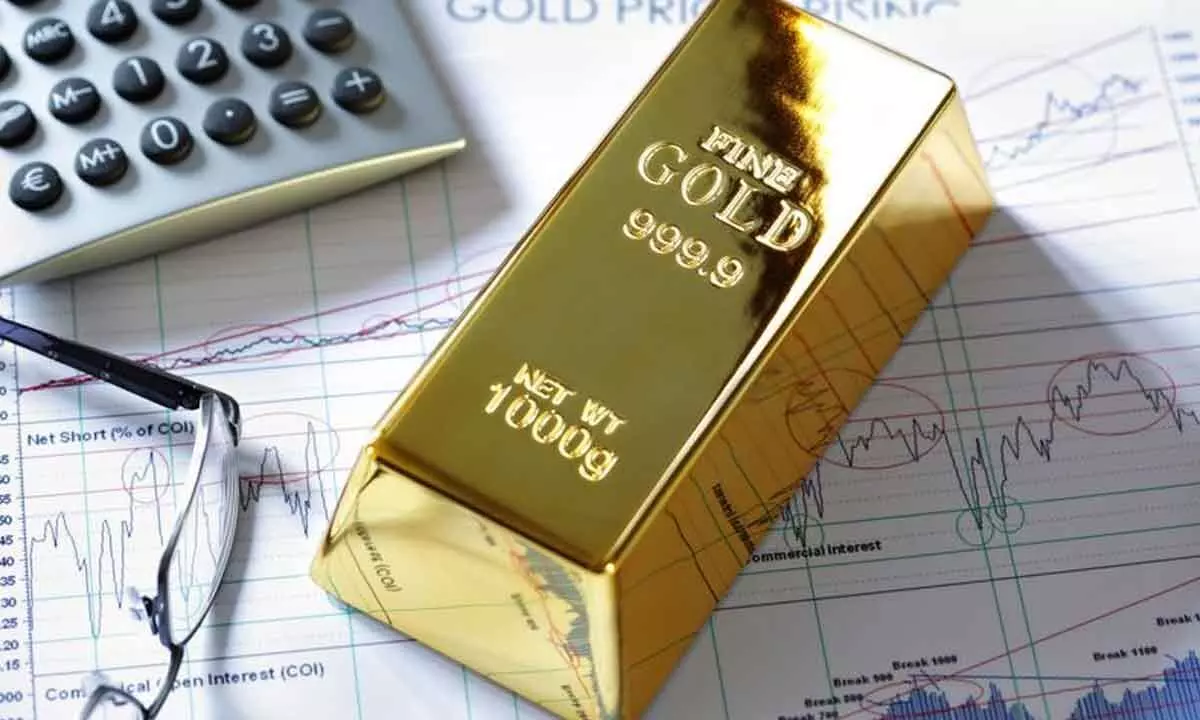Gold makes for a safe and smart investment strategy
The yellow metal offers stability during times of uncertainty and mitigates risks from other assets
image for illustrative purpose

Gold generally holds its value and preserves your purchasing power over the long haul, despite fluctuations in the dollar.When an economy slumps into a recession, the stock market does, too. During times of economic downturn, however, gold can be a good way to ensure a diverse portfolio
Buying low and selling high is a solid investment strategy, no matter what the asset is — and that includes gold. While gold prices have been climbing over the last few months, the recent decline could offer an attractive entry point. After all, gold's value tends to reliably increase over the long term, so the opportunities to buy low are typically limited. In turn, any dip in price can present a good opportunity to add gold to your portfolio for less than what you'd normally pay. And, historical trends show that it's likely that gold prices will eventually find support and show signs of a potential upward trajectory. So, those who invested during the downtrend could position themselves for substantial gains as the market sentiment shifts.
In turn, there are lots of people who want to protect their finances against a changing economy — or many who may be reconsidering their overall investment plan. In many cases, gold could be a good investment to help weather the changing and uncertain economic environment.
After all, this precious metal can offer stability during times of uncertainty, diversify your portfolio and mitigate some of the risk from other assets. Gold and other precious metals have long been considered a smart way to fight inflation. Gold generally holds its value and preserves your purchasing power over the long haul, despite fluctuations in the dollar.
When an economy slumps into a recession, the stock market does, too. Real estate investments can also lose value during a recession. During times of economic downturn, however, gold can be a good way to ensure a diverse portfolio. Diversification generally reduces your exposure to these riskier assets and minimizes the impact of any losses. In a recession, liquidity — or being able to offload assets for cash quickly — holds the key. In case, you fall on hard financial times, you can cash in on those assets and still stay afloat on bills and other necessities.
Stocks, bonds, real estate, collectibles and other tangible assets are typically considered illiquid investments. They're hard to turn into usable funds, particularly when the demand for those items is down.
Gold, on the other hand, is highly liquid and can be exchanged quickly for cash, making it a smart investment during down periods. It is a good investment for some, but it's not the right move for everyone. If maximizing the growth of your investments is a priority, for example, then gold is probably not for you. It is typically considered a low-risk, safe-haven investment but it's not one that offers high returns.
Gold prices rose 15% in 2023 to reach$2,078/oz, the highest annual close on record. It also ended the year as one of the best performing assets. According to (GRAM), the influential drivers of gold’s return in 2023 were central banks, geopolitics, interest rates and gold’s previous (lagged) monthly return.
Elevated geopolitical risk was a key driver in 2023 and is captured by including GPR in our model. This contributed an estimated five per cent to returns and mitigated a drag from falling inflation and other risks (-3% contribution).
The drag from lagged returns supports the notion that the gold market is populated by price sensitive buyers alongside investors that buy into stronger prices – a feature of gold’s dual nature. We have found this to be the case in both jewellery and bar and coin segments at annual and quarterly frequencies. Central banks may also exhibit price sensitivity, particularly if they are purchasing at regular intervals over a longer period of time-something one has witnessed over the last two years. Although we still view a material resurgence of inflation as a remote possibility, this scenario would likely be positive for gold, as it undermines monetary policy and risks an even harder landing further down the road.
Gold was a surprising star in 2023, surging against the odds of rapidly rising interest rates and resilient economies. Central banks are largely to thank for the outperformance, but elevated geopolitical risks created investor reticence to give up gold as well as being a key driver of central bank demand.
Meanwhile, the rates-driven weakness seen in developed markets, led by European ETF flows, was insufficient to dent gold’s performance. In the near term, a tug-of-war between historically positive January and some pushback against the dovish sentiment that drove prices to all-time-highs in December is likely.
Equally, there may well be a battle between intermittent inflationary scares (shipping costs) and recessionary impulses (JOLTS hiring), highlighting how perilously narrow the path to an economic soft landing is.

